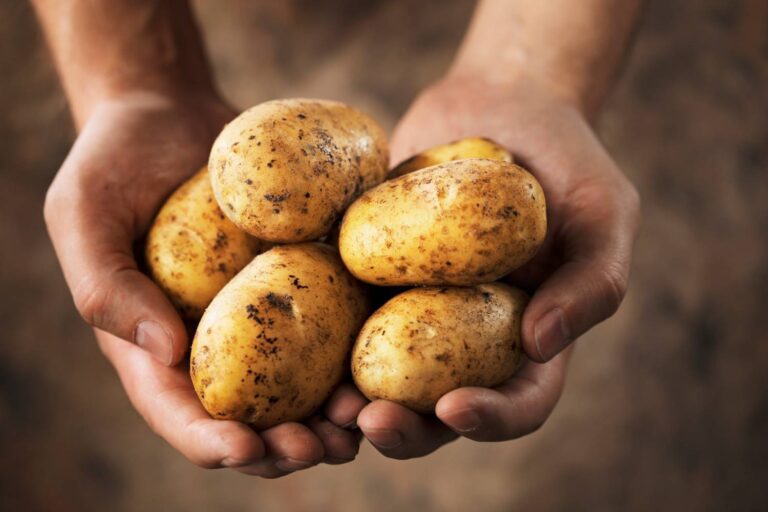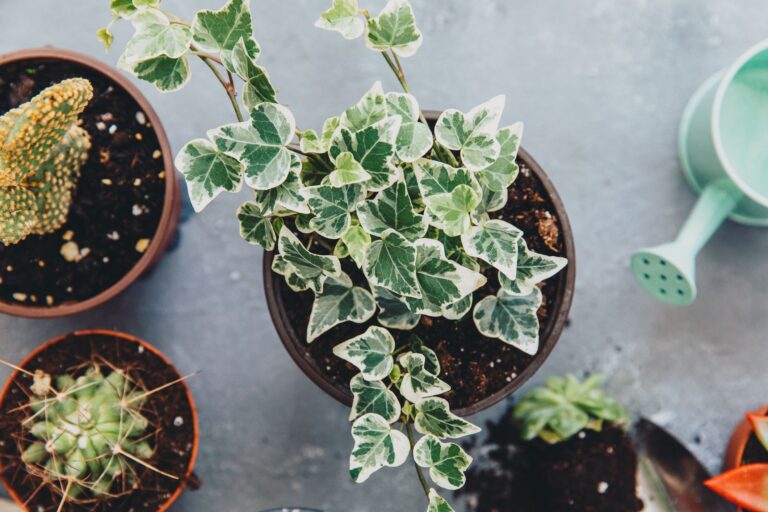Home Gardening Tips for Monstera Deliciosa
Did you know that Monstera Deliciosa, also known as the Swiss cheese plant, is one of the most popular houseplants in the United States? With its unique, eye-catching foliage, it’s no wonder why so many people love to have it in their homes. But did you also know that there are specific home gardening tips that can help you keep your Monstera Deliciosa healthy and thriving?
In this blog, we’ll explore some of the best home gardening tips for your Monstera Deliciosa. From proper watering techniques to the ideal lighting conditions, we’ll cover everything you need to know to keep your plant happy and healthy.
As a professional writer with extensive experience in home gardening, I’m excited to share my expertise with you. Whether you’re a seasoned plant parent or just starting out, you’ll find valuable tips and insights in this blog.
So, if you’re ready to take your Monstera Deliciosa care to the next level, let’s get started!
Table of Contents
Factors to Consider Before Planting a Monstera Deliciosa
One common question that many people have before planting a Monstera Deliciosa is whether or not it is the right plant for their home. While Monstera Deliciosa can be a stunning addition to any indoor space, it is important to consider a few factors before bringing one home.
- Assess Available Space:
- Monstera Deliciosa can grow quite large, so evaluate the available space in your home.
- Ensure there’s enough room for the plant to thrive without being crowded or cramped.
- Lighting Conditions:
- Monstera Deliciosa prefers bright, indirect light.
- Choose a spot that receives ample natural light or invest in artificial lighting if needed.
- Commitment to Plant Care:
- Monstera Deliciosa requires regular attention and maintenance.
- Be prepared to dedicate time and effort to ensure proper growth and health.
- Allergies and Sensitivities:
- While Monstera Deliciosa is generally not toxic, its sap can cause skin irritation in some individuals.
- Handle the plant with care if you or anyone in your home has a history of plant allergies or sensitive skin.
- Fruit Safety:
- Monstera Deliciosa is not safe for consumption until the fruit fully ripens.
- Unripe fruit can cause throat irritation.
Therefore, if you have young children or pets in the house, extra caution must be taken to ensure their safety around the plant. By considering these factors, you can determine if a Monstera Deliciosa is the right fit for your home and make an informed decision before bringing one into your space.
Ideal Conditions for Growing Monstera Deliciosa Indoors
Monstera deliciosa, also known as the Swiss cheese plant, is a popular choice for indoor gardening enthusiasts. To ensure healthy growth and lush foliage, it is crucial to provide the ideal conditions for this tropical plant.
- Firstly, it is important to place your Monstera deliciosa in a spot that receives bright, indirect light.
- While it can tolerate lower light conditions, placing it near a window with filtered sunlight will promote optimal growth.
- Avoid placing it in direct sunlight, as this can lead to burned leaves.
- In addition to light, temperature and humidity are key factors to consider when growing Monstera deliciosa indoors.
- This plant thrives in temperatures that range from 65 to 85 degrees Fahrenheit (18 to 29 degrees Celsius).
- Avoid exposure to extreme cold or drafts, as this can cause damage to the leaves.
- Furthermore, Monstera deliciosa prefers higher humidity levels, so consider using a humidifier or placing the plant on a tray filled with water and pebbles to increase humidity.
- Regular misting of the leaves can also help maintain the ideal moisture levels for your plant.
Choosing the Right Pot and Soil for Monstera Deliciosa
When it comes to choosing the right pot for your Monstera Deliciosa, there are a few factors to consider.

The following table explain the right pot and soil for Monstera Deliciosa:
| Aspect | Pot Requirements | Soil Requirements |
|---|---|---|
| 1. Pot Size | – Optimal pot size: 10-14 inches in diameter. | – Well-draining soil mix with a pH of 6.0-7.5. |
| 2. Pot Material | – Lightweight materials like plastic or terracotta. | – A mix of peat moss, perlite, and pine bark. |
| 3. Drainage Holes | – Essential for preventing waterlogging. | – Good drainage properties to avoid root rot. |
| 4. Soil Aeration | – Ensures oxygen reaches the roots. | – Perlite or coarse sand for added aeration. |
| 5. Moisture Retention | – Balanced moisture retention. | – Peat moss helps retain moisture without waterlogging. |
| 6. Nutrient Content | – Neutral to slightly acidic soil pH. | – Balanced, well-fertilized mix for overall plant health. |
| 7. Compactness Prevention | – Prevents soil compaction. | – Incorporate coconut coir for structure and aeration. |
Values:
- Pot Size: 12 inches
- Pot Material: Lightweight plastic
- Drainage Holes: Multiple at the bottom
- Soil Aeration: 30% perlite
- Moisture Retention: Peat moss content: 20%
- Nutrient Content: pH 6.5
- Compactness Prevention: 10% coconut coir
I recently tried Sun Gro Horticulture Black Gold Peat Moss, and I must say, it exceeded my expectations. Its rich, dark texture made it easy to work with, and I noticed an immediate improvement in the moisture retention of my soil. Plus, it provided excellent aeration for my plants’ roots, resulting in healthier growth. Overall, it’s a top-quality product that I highly recommend to any gardener looking to enhance their soil.
- pH Balancing: Peat moss tends to be slightly acidic, which is beneficial for plants that thrive in acidic soil conditions.
- Water Retention: Peat moss can retain up to 20 times its weight in water, releasing it slowly as plants need it. This property reduces the frequency of watering.
- Aeration: Amending soil with peat moss creates more air pockets, promoting better root growth.
- All-Purpose: It’s an excellent all-purpose natural soil conditioner, suitable for various gardening needs.
- Slow Decomposition: Peat moss decomposes very slowly, which can be a drawback if you’re looking for rapid soil improvement.
- Environmental Impact: Harvesting peat moss can negatively impact wetland ecosystems. Consider using alternatives like coconut coir or composted bark to reduce environmental impact.
Understanding the Watering Needs of Monstera Deliciosa
One of the most important factors to consider when caring for a Monstera Deliciosa is its watering needs. Proper watering is crucial for the health and growth of this plant. So how often should you water your Monstera Deliciosa? The answer depends on several factors, including the size of your plant, the size of its pot, and the current environmental conditions.
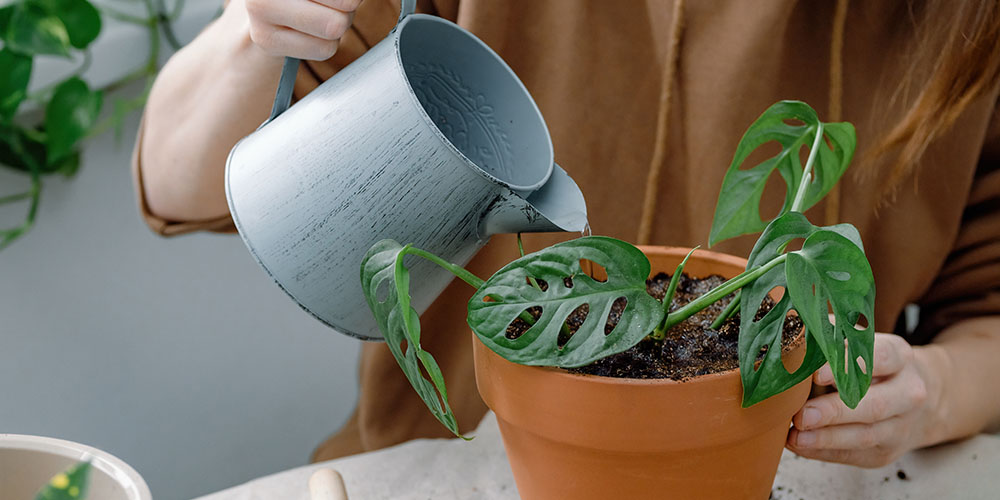
- Watering Guidelines:
- Water when the top inch of soil feels dry to the touch.
- Avoid overwatering to prevent root rot.
- Underwatering can cause leaves to droop and turn yellow.
- Soil Drainage:
- Monstera Deliciosa prefers well-draining soil.
- Ensure the pot has drainage holes to prevent waterlogging.
Remember these tips to keep your Monstera Deliciosa thriving! Proper watering is just one aspect of caring for this beautiful plant, so let’s explore other factors that contribute to its overall well-being.
The Importance of Proper Drainage for Monstera Deliciosa
Proper drainage is essential for the healthy growth and development of Monstera Deliciosa. Excess water in the soil can lead to root rot and other water-related issues, ultimately causing damage to the plant. To ensure that your Monstera thrives, it is crucial to provide a suitable drainage system.
- Yellow and wilted leaves, along with mold or fungus growth on the soil surface, may indicate poor drainage.
- Stunted growth and a lack of new leaf production can also be signs of waterlogged soil.
- Improving drainage by ensuring the pot has drainage holes and using well-draining soil can help the Monstera Deliciosa regain vitality and thrive.
Providing Adequate Light for Monstera Deliciosa
Monstera Deliciosa, commonly known as the Swiss cheese plant, is a lush and beautiful addition to any indoor space. In order to thrive and reach its full potential, this tropical plant requires an adequate amount of light. Providing the right amount of light is crucial for the overall health and growth of the Monstera Deliciosa.
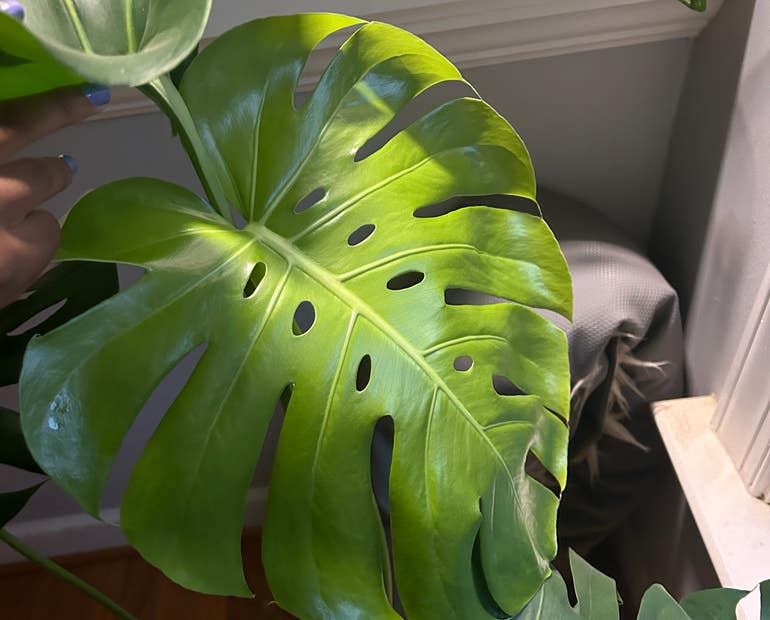
1) How much light does the Monstera Deliciosa need?
The Monstera Deliciosa thrives in bright, indirect light. It is important to avoid direct sunlight, as it can scorch the leaves and cause irreversible damage. Place your Monstera near a window with filtered or diffused light, ensuring that it receives enough brightness throughout the day. If you are unable to provide sufficient natural light, you can also use artificial grow lights to supplement the light requirements of your Monstera Deliciosa.
2) What are the signs of inadequate light?
If your Monstera Deliciosa is not receiving enough light, it will show signs of distress. The leaves may become pale or develop bleached patches, and the overall growth may slow down. The plant may also become leggy and reach out for more light. If you notice these signs, it is crucial to adjust the lighting conditions immediately to prevent further damage. Remember, providing adequate light is essential in ensuring that your Monstera Deliciosa remains healthy and vibrant.
Temperature and Humidity Requirements for Monstera Deliciosa
Maintaining the right temperature and humidity levels is crucial for the healthy growth of Monstera Deliciosa.

- Temperature Range:
- Monstera Deliciosa thrives in temperatures between 65°F to 85°F (18°C to 29°C).
- Avoid exposing it to anything below 50°F (10°C), as it can damage the leaves and stunt growth.
- Consistent Environment:
- Place your Monstera Deliciosa in a room with a consistent temperature.
- Avoid drafts or sudden temperature fluctuations to prevent stress.
- Humidity Requirements:
- Monstera Deliciosa is native to rainforests and requires high humidity.
- Aim for 60% to 70% humidity.
- Mist the leaves regularly or use a humidifier to maintain the desired level.
Keep these factors in mind to ensure your Monstera Deliciosa thrives! 🌿🪴
Having used the LEVOIT Ultrasonic Humidifier, I’m impressed by its efficient moisture delivery, ensuring my plants stay healthy and vibrant. Its whisper-quiet operation allows for peaceful ambiance, and the adjustable mist output caters to varying plant needs. While it’s a bit bulky, its large capacity compensates, though regular cleaning is essential. Overall, it’s a reliable choice for maintaining optimal humidity levels for indoor plants.
✅ Large Capacity: With a 6-liter water tank capacity, this humidifier can operate for extended periods without needing frequent refills, making it suitable for larger indoor plant collections.
✅ Whisper-Quiet Operation: Its ultrasonic technology ensures silent operation, allowing you to place it in any room without disturbing your daily activities or sleep.
✅ Adjustable Mist Output: The mist output is adjustable, allowing you to customize humidity levels according to the specific needs of your plants.
✅ Optional Essential Oil Tray: It includes an essential oil tray, enabling you to add your favorite essential oils to the mist for a pleasant aroma while also providing potential benefits to your plants.
❌ Price: Compared to smaller humidifiers, the LEVOIT Humidifier may be relatively more expensive upfront, although its performance and features justify the investment for serious plant enthusiasts.
❌ Cleaning Requirements: Like all humidifiers, regular cleaning is necessary to prevent the buildup of mold or bacteria, which can potentially harm your plants.
Fertilizing Tips for Healthy Growth of Monstera Deliciosa
Fertilizing plays a crucial role in promoting the healthy growth of Monstera Deliciosa. To ensure optimal growth and development, it is essential to provide the plant with the necessary nutrients.
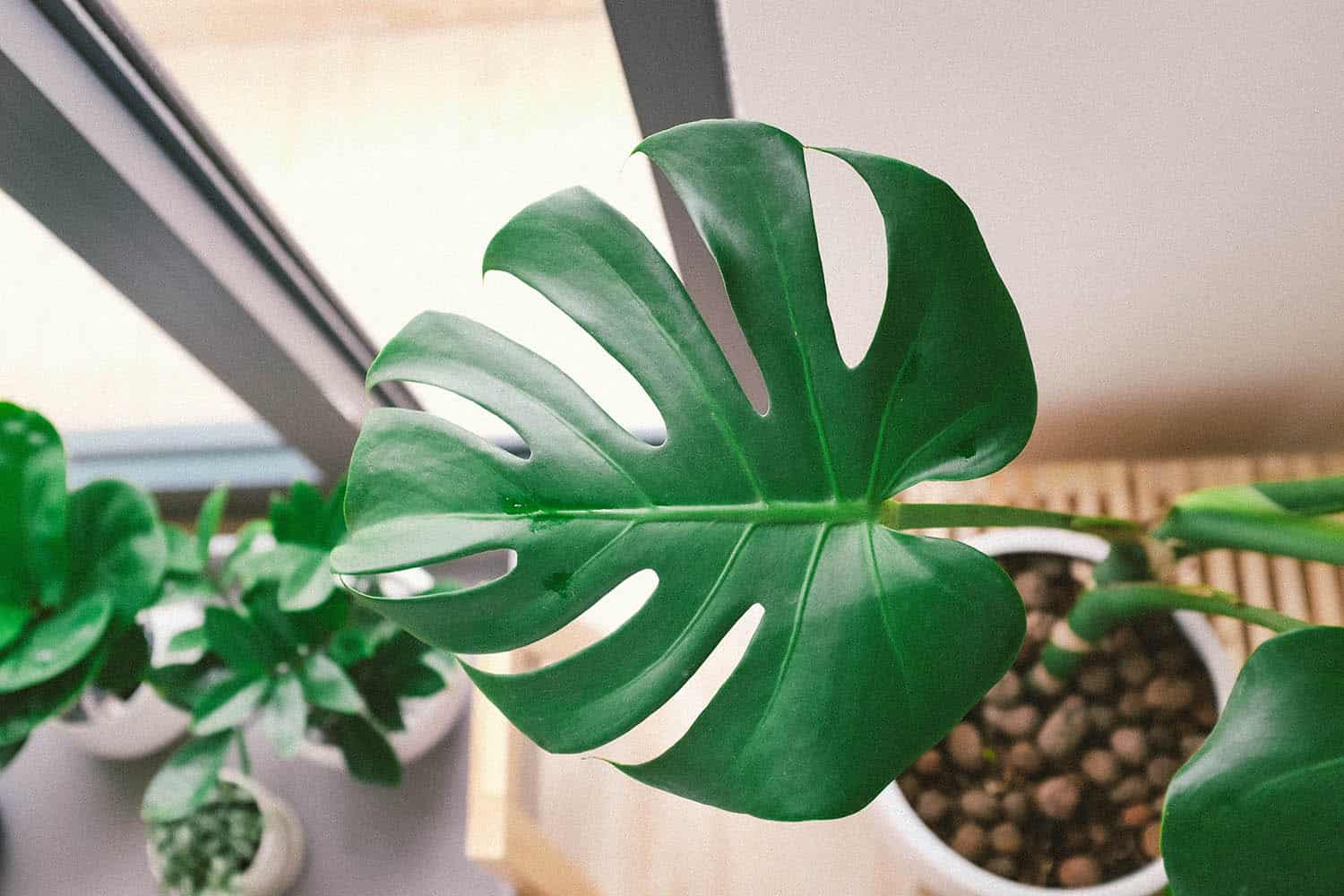
To ensure healthy growth for your Monstera Deliciosa, follow these steps:
- Fertilizing: Fertilize your Monstera at least once a month with a balanced houseplant fertilizer diluted to half strength. This will provide the necessary nutrients for the plant to thrive. Be careful not to over-fertilize, as this can burn the foliage and harm the plant.
- Understanding the Growing Season: Monsteras grow the most during the Spring and Summer, so these are the months you should feed it more often, ideally every two weeks to once per month. During the dormant season, you should not fertilize the plant.
- Choosing the Right Fertilizer: Look for a fertilizer with the right mineral content for your Monstera. The three most important minerals are nitrogen, phosphorus, and potassium. A 20-20-20 liquid fertilizer is generally best for Monsteras, as it encourages healthy, strong growth.
- Supplementing with Micronutrients: Monsteras also need micronutrients such as iron, manganese, and magnesium. These can be supplemented using specialized micronutrient fertilizers designed for indoor plants. Apply these along with the regular balanced fertilizer to ensure the Monstera receives all the necessary nutrients for healthy growth.
- Monitoring the Plant’s Health: Monitor the plant’s health regularly. If you notice any signs of nutrient deficiency or excess, adjust your fertilization schedule and/or the type of fertilizer you are using.
Pruning Techniques to Shape and Maintain Monstera Deliciosa
Pruning is an essential practice for shaping and maintaining the Monstera Deliciosa plant. With its fast growth and sprawling nature, regular pruning helps to keep the plant compact and manageable, while promoting healthier growth and a more aesthetically pleasing appearance. When it comes to pruning the Monstera Deliciosa, there are a few techniques to keep in mind.
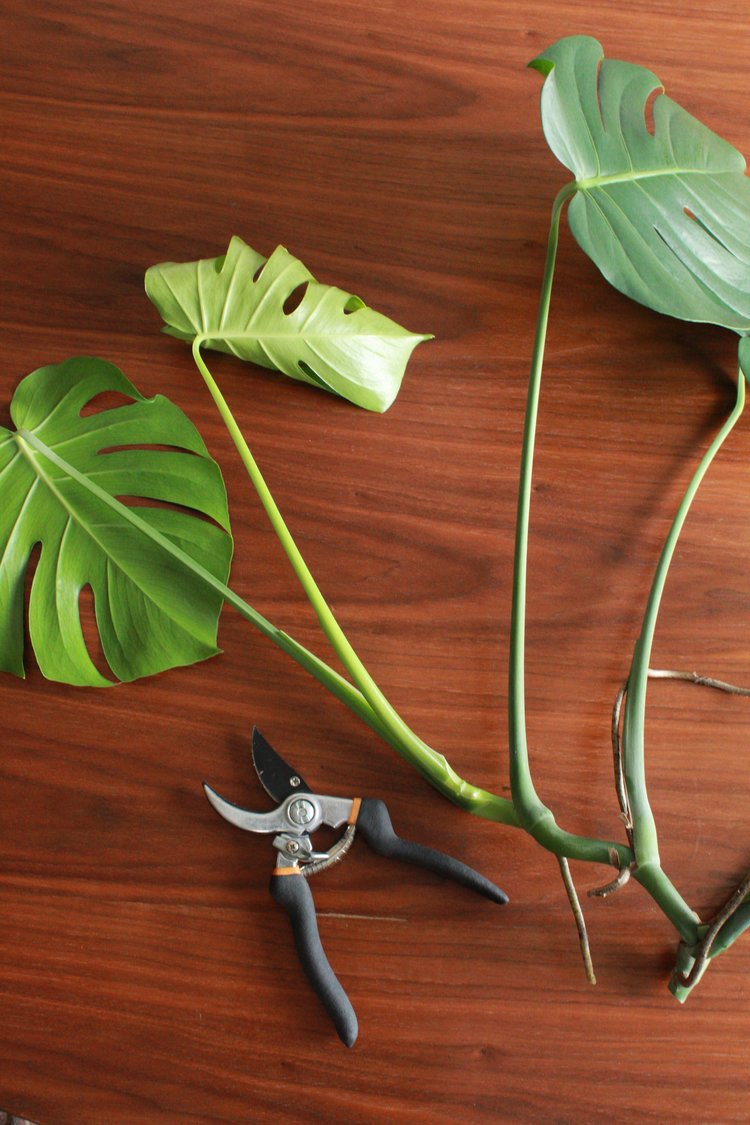
- Identify Pruning Areas: Locate dead or damaged leaves and remove them at the base using clean, sharp pruning shears.
- Manage Unruly Growth: Trim back stems or vines that are growing in unwanted directions to maintain plant shape.
- Pinching Technique: Stimulate branching and bushier growth by gently pinching off the tips of new growths.
- Combat Legginess: Use pinching to prevent Monstera Deliciosa from becoming too leggy or elongated.
- Redirect Energy: Encourage lateral growth by pinching back tips, resulting in a more compact and fuller appearance.
- Use Clean Tools: Prevent disease or pest spread by always using clean pruning tools.
- Timing: Prune during spring or early summer when the plant is actively growing for best results.
Remember to always use clean tools when pruning your Monstera Deliciosa to prevent the spread of diseases or pests. Additionally, it’s important to prune during the appropriate time of year, which is typically in the spring or early summer when the plant is actively growing. By following these pruning techniques, you can shape and maintain your Monstera Deliciosa plant to create a beautiful and thriving addition to your indoor space.
Dealing with Common Pests and Diseases of Monstera Deliciosa
Here’s a table summarizing common pests and diseases that can affect Monstera Deliciosa, along with their symptoms, treatments, and effects on the plant:
| Issue | Symptoms | Treatment | Effects on Plant |
|---|---|---|---|
| Spider Mites | – Small white spots or stipples on leaves. – Leaves turn yellow and then brown. | – Use insecticidal soap or neem oil. – Isolate affected plant to prevent spread. | Drains chlorophyll, weakening the plant. |
| Aphids | – Feeding on new growth. – Sap-feeding insects. – Produce honeydew, leading to sooty mold. | – Introduce ladybugs (eco-friendly method). – Use insecticidal soap or neem oil. | Damage leaves and cause sooty mold. |
| Scale Insects | – Small, beige or brown armored insects on leaves and stems. – Slow-moving. | – Remove manually or use insecticidal soap. – Prune heavily infested areas. | Feed on sap, may be mistaken for an infection. |
| Leafminers | – Light yellow trails or splotches on leaves. – Burrow into leaf tissue. | – Prune affected leaves. – Use insecticidal soap. | Group of pests that eat leaf surface. |
| Fungus Gnats | – Tiny black flies around the soil. – Larvae feed on roots. | – Allow soil to dry between waterings. – Use sticky traps. | Larvae damage roots, affect plant health. |
| Root Rot | – Yellowing leaves. – Wilting. – Foul odor from soil. | – Improve drainage. – Repot in fresh soil. – Trim affected roots. | Fungal or bacterial attack on roots, can be fatal. |
Remember to monitor your Monstera Deliciosa regularly and take early action to prevent further damage.
Propagation Methods for Expanding Your Monstera Deliciosa Collection
Once you have successfully grown a Monstera Deliciosa plant, you may be interested in expanding your collection through propagation. There are several propagation methods you can try to create new plants and enjoy more of these stunning beauties in your home.
:max_bytes(150000):strip_icc()/SPR-how-to-propagate-monstera-04-bd6b8ebc682f4a03baa6ece4fd8a75e9.jpg)
- Stem Cuttings:
- Select a healthy stem with at least one node (where new leaves or roots form).
- Use clean, sharp scissors or pruning shears to make a clean cut just below a node.
- Remove any lower leaves, leaving a few on top to sustain the cutting.
- Place the cutting in a glass of water or directly into moist potting soil.
- Keep the cuttings in a warm area with indirect light and maintain consistent moisture levels for root development.
- Air Layering:
- Choose a node on a healthy stem.
- Make a small cut just below the node.
- Gently peel back the bark to expose the inner stem.
- Wrap moist sphagnum moss around the exposed portion, securing it with twine or plastic wrap.
- Keep the moss moist and wait for roots to develop.
- Once roots are established, carefully cut the new plant away from the parent and pot it up separately.
Propagation allows you to create new Monstera Deliciosa plants without the need to purchase more. It’s an exciting process that adds a sense of accomplishment to your gardening journey. With these propagation methods, you can expand your Monstera Deliciosa collection and enjoy the beauty and benefits of these stunning plants even more.
Supporting Monstera Deliciosa with Stakes or Trellises
Many Monstera Deliciosa enthusiasts choose to support their plants with stakes or trellises to help them grow in an upright and structured manner.

- Variability in Growth Habits: The need for staking or trellising Monstera Deliciosa plants varies depending on the specific cultivar. Some varieties naturally exhibit more compact and upright growth habits, reducing the necessity for additional support structures.
- Growing Conditions Influence: The decision to stake or trellis a Monstera Deliciosa can also be influenced by the growing conditions. Factors such as light exposure, humidity levels, and available space can impact the plant’s growth pattern and determine whether support is needed.
- Aesthetic Considerations: Staking or trellising Monstera Deliciosa plants can serve aesthetic purposes, creating an attractive display while maximizing space utilization in indoor or outdoor settings. The choice to provide support may also be driven by the desired look for the plant in its environment.
However, for larger and more vining varieties, staking or trellising is highly recommended to maintain their shape and prevent them from sprawling. Regardless of the specific Monstera Deliciosa variety you have, consider staking or trellising if you want a more controlled and vertical growth pattern.
Seasonal Care Tips for Monstera Deliciosa
As the seasons change, it is important to adjust your care routine for your Monstera Deliciosa accordingly.

Monitor Soil Moisture: With increased temperatures and higher humidity, the soil can dry out more quickly.
Check Soil Moisture: Regularly stick your finger about an inch into the soil. If it feels dry, it’s time to water.
Avoid Overwatering: Be cautious not to overwater, as excessive moisture can lead to root rot.
Protect from Drafts: Monstera Deliciosa thrives in temperatures between 65°F to 85°F (18°C to 29°C).
Avoid Cold Drafts: Keep the plant away from drafty windows or doorways that can cause sudden temperature drops.
Consider Relocation: If you live in a colder climate, move the plant to a spot with bright, indirect light but without cold drafts.
Additionally, it’s a good idea to reduce watering frequency during winter, as the plant’s growth slows down and it requires less water. Overall, providing a stable and comfortable environment for your Monstera Deliciosa throughout the year will ensure its healthy growth and vibrant foliage.
The following table explains the seasonal care tips for Monstera Deliciosa:
| Season | Care Tips | Quantitative Guidelines |
|---|---|---|
| Spring | – Watering: Increase frequency as temperatures rise. | – Water every 1-2 weeks or when the top inch of soil feels dry. |
| – Fertilizing: Begin monthly with balanced liquid fertilizer. | – Use a 10-10-10 fertilizer at 1/4 strength. | |
| – Pruning: Trim leggy vines to encourage bushier growth. | – Trim up to 1/3 of the plant’s length if needed. | |
| Summer | – Light: Provide bright, indirect sunlight. | – Ensure 6-8 hours of filtered sunlight daily. |
| – Humidity: Maintain high humidity levels. | – Aim for 60-80% humidity around the plant. | |
| – Pest Control: Monitor for pests and treat promptly. | – Use neem oil or insecticidal soap as needed. | |
| Fall | – Watering: Reduce frequency as temperatures drop. | – Water every 2-3 weeks or when soil feels dry. |
| – Fertilizing: Continue monthly but reduce strength. | – Use a 10-10-10 fertilizer at 1/2 strength. | |
| – Temperature: Protect from cold drafts and temperature drops. | – Maintain temperatures above 55°F (13°C). | |
| Winter | – Light: Ensure adequate but indirect light exposure. | – Place near a bright window but shield from direct sun. |
| – Watering: Reduce watering to prevent overwatering. | – Water every 3-4 weeks or when soil is dry. | |
| – Temperature: Keep the plant in a warm environment. | – Maintain temperatures above 50°F (10°C). |
FAQs:
1. Can I keep my Monstera Deliciosa outside during the summer months?
While Monstera Deliciosa can enjoy spending some time outdoors during the summer, it is essential to protect it from direct sunlight and excessive heat. Place it in a shaded area where it can still receive filtered sunlight. Avoid exposing it to long periods of intense sunlight, as it can scorch the leaves. Monitoring the moisture levels of the soil is particularly crucial during this time, as outdoor conditions may cause the soil to dry out more quickly. Make sure to water it regularly to keep the soil consistently moist, but not waterlogged.
2. Should I fertilize my Monstera Deliciosa during the winter months?
During the winter months, it is generally best to reduce or completely stop fertilizing your Monstera Deliciosa. This is because the plant’s growth naturally slows down during this time, and it requires less nutrients. Over-fertilizing in winter can lead to salt build-up in the soil, which can be detrimental to the plant’s health. Instead, focus on providing the plant with a suitable environment, including stable temperature and humidity levels. Resume fertilization in spring when the plant begins actively growing again.
Troubleshooting Common Issues in Monstera Deliciosa
Wilting leaves can be a common issue faced by Monstera Deliciosa owners. This can be caused by various factors, including overwatering or underwatering, improper lighting conditions, or inadequate humidity levels.
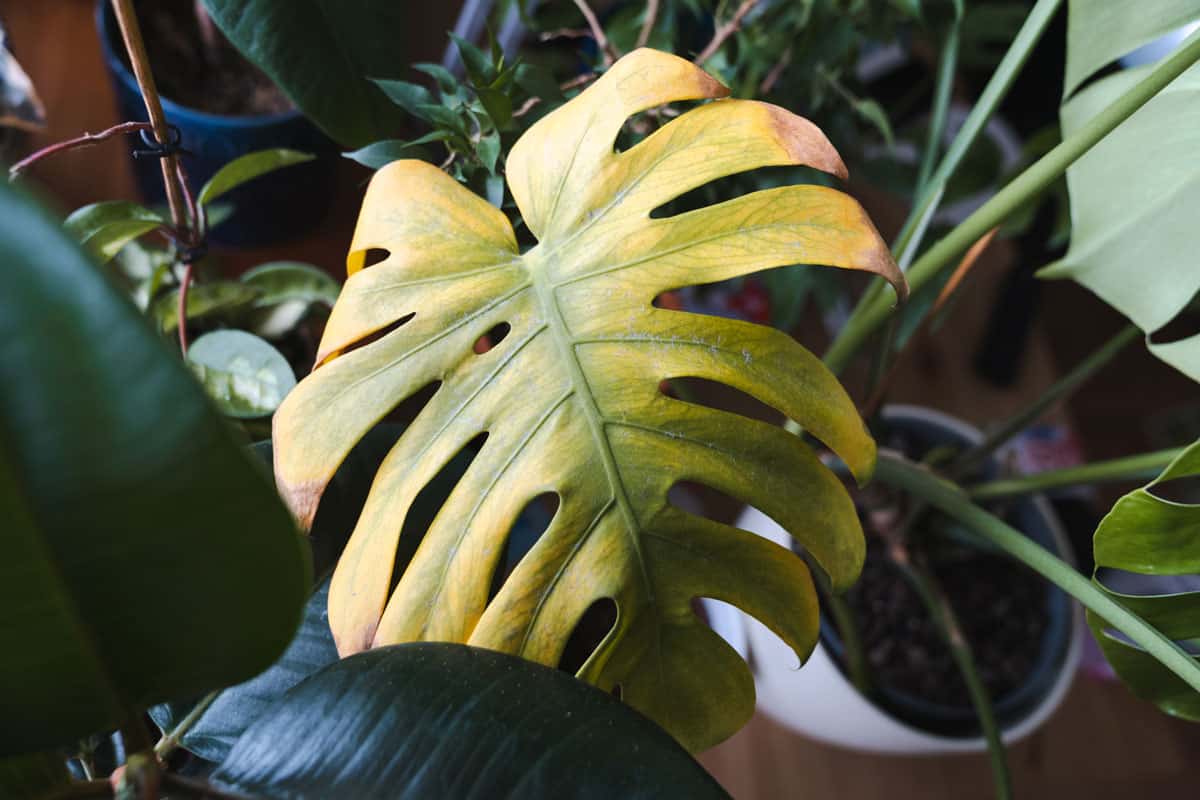
To address this problem, it is important to assess the watering needs of your plant and ensure that it is getting the right amount of water. Additionally, make sure to place your Monstera Deliciosa in a well-lit area, avoiding direct sunlight which can scorch the leaves. Increasing the humidity around the plant by misting the leaves or using a humidifier can also help revive wilting leaves.
yellow or brown spots
Another common issue is the development of yellow or brown spots on the leaves of Monstera Deliciosa. This can be a sign of fungal or bacterial infections, nutrient deficiencies, or even pest infestations. To troubleshoot this problem, carefully inspect the affected leaves and remove any diseased or damaged parts. Ensure that your plant is receiving sufficient nutrients through regular fertilizing. If pest infestation is suspected, take appropriate measures such as using insecticidal soap and regularly cleaning the leaves to remove any pests. Additionally, maintaining proper air circulation and avoiding overwatering can help prevent fungal or bacterial infections.
Harvesting and Enjoying the Fruits of Monstera Deliciosa
Monstera deliciosa, commonly known as the Swiss cheese plant, is a fascinating tropical plant that not only adds a touch of elegance to any indoor space but also offers a delicious treat. Harvesting the fruits of Monstera deliciosa can be an exciting endeavor for plant enthusiasts looking to enjoy a unique culinary experience.

- Wait for Monstera deliciosa fruits to fully ripen before harvesting, indicated by yellow scales and slight softness.
- Exercise patience and allow the fruit to ripen naturally on the plant for optimal flavor.
- Avoid harvesting premature fruits, as they may not have developed the desired taste.
- Gently remove ripe fruits from the plant, being careful not to damage neighboring leaves or stems.
- Handle the fruits with care to avoid skin irritation, as their surface can be mildly irritating to some individuals.
- Once harvested, slice open the fruits to enjoy the delicious flesh, which boasts a delightful blend of pineapple and banana flavors.
Creating a Stunning Display with Monstera Deliciosa in Your Home
Creating a stunning display with Monstera Deliciosa in your home is a great way to bring a touch of tropical beauty indoors. With its large, lush leaves and unique fenestrations, this plant can truly become a statement piece in any room. However, before you dive into adding this beauty to your home, there are a few frequently asked questions you may have.
- Choose the Right Location: Select a well-lit spot in your home that receives indirect sunlight, as direct sunlight can scorch the plant’s leaves. Areas near east or north-facing windows are ideal for providing the right balance of light.
- Select Stylish Containers: Enhance the visual appeal of your Monstera Deliciosa by housing it in decorative containers that complement your home’s decor. Opt for pots in materials like ceramic, terracotta, or woven baskets to add texture and interest to the display.
- Play with Placement: Experiment with different placements to find the perfect spot for your Monstera. Consider placing it as a focal point in a living room corner, on a side table, or as a statement piece in an entryway to make a bold impression.
- Create Visual Interest: Incorporate other elements to enhance the visual appeal of your Monstera display. Pair it with smaller houseplants or trailing vines to add layers and texture. Additionally, consider adding decorative elements like pebbles or moss to the top of the soil for a polished finish.
- Consider Vertical Spaces: Take advantage of vertical spaces to showcase your Monstera Deliciosa. Install wall-mounted shelves or hanging planters to create a vertical garden effect, allowing the plant’s lush foliage to cascade down for a dramatic display.
- Maintain Balance: Ensure that your Monstera display maintains a sense of balance and harmony within the space. Avoid overcrowding the plant with too many accessories or placing it in an area where it may overwhelm other elements of your decor.
- Regular Care and Maintenance: Keep your Monstera Deliciosa looking its best by providing proper care and maintenance. Water it when the top inch of soil feels dry, and dust the leaves regularly to remove any buildup that may hinder photosynthesis.
By following these tips, you can create a stunning display with Monstera Deliciosa that adds a touch of tropical elegance to your home decor, transforming any space into a lush oasis of greenery and style.
Enjoy your Monstera Deliciosa! 🌿🪴
Watch video for more information:
FAQ
What factors should I consider before planting a Monstera Deliciosa?
Before planting a Monstera Deliciosa, you should consider factors such as the available space, lighting conditions, temperature, and humidity levels in your home.
What are the ideal conditions for growing Monstera Deliciosa indoors?
Monstera Deliciosa thrives in bright, indirect light and temperatures between 65-85°F (18-29°C). It prefers humidity levels of 50-60% and well-draining soil.
How do I choose the right pot and soil for Monstera Deliciosa?
Choose a pot with drainage holes and use well-draining soil, such as a mix of potting soil, perlite, and peat moss, to ensure proper moisture levels for the plant.
What are the watering needs of Monstera Deliciosa?
Water Monstera Deliciosa when the top inch of soil feels dry. It is important not to overwater or let the plant sit in standing water, as it can lead to root rot.
Why is proper drainage important for Monstera Deliciosa?
Proper drainage is crucial for Monstera Deliciosa as it helps prevent waterlogged soil, which can cause root rot and other issues.
How much light does Monstera Deliciosa require?
Monstera Deliciosa thrives in bright, indirect light. Avoid placing it in direct sunlight, as it can scorch the leaves.
What are the temperature and humidity requirements for Monstera Deliciosa?
Monstera Deliciosa prefers temperatures between 65-85°F (18-29°C) and humidity levels of 50-60%. It benefits from regular misting or using a humidifier.
How should I fertilize Monstera Deliciosa for healthy growth?
Use a balanced liquid fertilizer diluted to half strength every 2-4 weeks during the growing season to provide essential nutrients to the plant.
What pruning techniques can I use to shape and maintain Monstera Deliciosa?
Prune Monstera Deliciosa by removing dead or damaged leaves and trimming overgrown stems. You can also prune to encourage bushier growth.
How can I deal with common pests and diseases of Monstera Deliciosa?
Common pests of Monstera Deliciosa include mealybugs, spider mites, and scale insects. Use organic insecticidal soap or neem oil to control them. Diseases like root rot can be prevented by providing good drainage and avoiding overwatering.
What are the propagation methods for expanding my Monstera Deliciosa collection?
Monstera Deliciosa can be propagated through stem cuttings or by air layering. Both methods require proper care and patience to ensure successful propagation.
How can I support Monstera Deliciosa with stakes or trellises?
As Monstera Deliciosa grows, you can provide support by using stakes or trellises. Gently tie the stems to the support structure to help them climb and stay upright.
What seasonal care tips should I follow for Monstera Deliciosa?
During the growing season, ensure adequate watering and fertilization. In the colder months, reduce watering and provide slightly cooler temperatures to allow the plant to rest.
What are some common issues I might face with Monstera Deliciosa and how can I troubleshoot them?
Common issues with Monstera Deliciosa include yellowing leaves, brown spots, and leaf curling. These can be caused by overwatering, inadequate light, pests, or diseases. Adjusting care practices and addressing the underlying causes can help resolve these issues.
Can I harvest and enjoy the fruits of Monstera Deliciosa?
Yes, Monstera Deliciosa produces edible fruits that have a unique flavor. However, it can take several years for the plant to reach fruiting maturity.
How can I create a stunning display with Monstera Deliciosa in my home?
To create a stunning display with Monstera Deliciosa, consider placing it in a decorative pot, using a trellis or moss pole for support, and arranging it with other complementary plants or decor items to enhance its beauty.

Studied Agricultural Engineering-Plant Protection at University of California, Davis.
Head of Content writing team at Southelmontehydroponics.com








